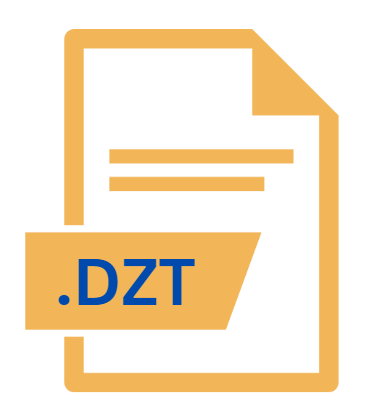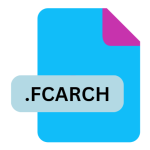.DZT File Extension

DirectorZone Title File
| Developer | CyberLink |
| Popularity | |
| Category | Video Files |
| Format | .DZT |
| Cross Platform | Update Soon |
What is an DZT file?
The .DZT file extension is associated with DirectorZone, an online community created by CyberLink, the company behind the popular video editing software, PowerDirector.
These files specifically contain title templates for video projects. Titles are crucial elements in video production, often used to introduce segments, display credits, or emphasize key points within the video.
The .DZT files simplify the process of adding professional-looking titles to videos, enabling users to enhance their projects with pre-designed, customizable templates.
More Information.
CyberLink’s PowerDirector was launched in 2001, quickly becoming one of the leading video editing software solutions due to its powerful features and user-friendly interface.
As the software evolved, CyberLink recognized the need for a platform where users could exchange creative assets, such as title templates, to broaden the creative possibilities available to its user base.
DirectorZone was launched in 2008, serving as an online repository where users could share effects, transitions, and title templates, among other resources.
The .DZT file extension was created to support the exchange of title templates within this community. The primary purpose was to streamline the process of adding visually appealing titles to videos, without requiring users to design them from scratch.
This approach democratized the use of high-quality titles, allowing even novice editors to produce professional-looking videos.
Origin Of This File.
The .DZT file format was introduced by CyberLink as part of their efforts to expand the capabilities of PowerDirector, their flagship video editing software.
The format emerged as a way to enable users to share creative resources, particularly title templates, through the DirectorZone community.
By allowing users to create, download, and share title templates in a standardized format, CyberLink facilitated a collaborative environment where users could access a wide array of creative tools to enhance their video editing projects.
File Structure Technical Specification.
A .DZT file contains data that defines the appearance, animation, and layout of a title template. The structure of a .DZT file typically includes:
- Title Text Information: This section contains the text that will appear in the title, including font type, size, color, and alignment.
- Animation Data: .DZT files include information on how the title text animates on and off the screen. This can involve various effects such as fade-ins, zooms, or rotations.
- Layering Information: Title templates often consist of multiple layers, each containing different elements such as text, images, or background effects. The .DZT file stores the arrangement and properties of these layers.
- Metadata: The file includes metadata that helps identify the template within PowerDirector and DirectorZone, such as the template name, author, and creation date.
- Compatibility Information: This ensures that the title template can be properly loaded and displayed in different versions of PowerDirector.
While the .DZT file format is proprietary to CyberLink, it is structured to be lightweight and easily shared. The format is optimized for quick loading within PowerDirector, ensuring that even complex title animations do not slow down the editing process.
How to Convert the File?
Converting .DZT files directly into another format is not straightforward. There are ways to achieve similar results:
- Export as Video: The most practical way to “convert” a .DZT file is to apply the title template within a PowerDirector project and then export the project as a video file (e.g., MP4, AVI). This process bakes the title into the video, allowing it to be used across various platforms.
- Convert to Image or Video Format: If the title is static or has limited animation, you can capture a screenshot of the title within PowerDirector or record a short clip of the animated title, saving it as an image or video file.
- Recreate in Other Software: For those who wish to use the title in another video editing program, manually recreating the template in that software is an option. This would involve matching the text, animations, and other design elements as closely as possible.
Advantages And Disadvantages.
Advantages:
- Ease of Use: .DZT files allow users to quickly add professional-looking titles to their videos without needing advanced design skills.
- Customization: While .DZT files come with predefined settings, they are fully customizable within PowerDirector, allowing users to modify text, animation, and other elements to suit their needs.
- Community Sharing: The DirectorZone community provides a vast library of .DZT files, enabling users to download and use templates created by others, thereby enhancing creativity and efficiency.
- Integration with PowerDirector: .DZT files are seamlessly integrated with PowerDirector, ensuring that they work smoothly within the software’s environment.
Disadvantages:
- Limited Compatibility: The .DZT file format is exclusive to CyberLink products, particularly PowerDirector. This limits its usability outside of this ecosystem.
- Dependency on DirectorZone: While DirectorZone offers a rich library of resources, users are dependent on this platform for accessing and sharing .DZT files. Any disruption to the service could affect access to these resources.
- Learning Curve: Although .DZT files are easy to use, new users may still require some time to fully understand how to customize and apply these templates effectively within PowerDirector.
How to Open DZT?
Open In Windows
- PowerDirector: Open PowerDirector, navigate to the title room, and import the .DZT file. The title template will be available for use within your video projects.
Open In Linux
- Emulation: Linux users can attempt to run PowerDirector through Wine or another compatibility layer, though this may require additional configuration and may not fully support all features.
Open In MAC
- Virtualization: Since PowerDirector is primarily a Windows application, Mac users can open .DZT files by running PowerDirector within a virtual machine using software like Parallels Desktop or VMware Fusion.












